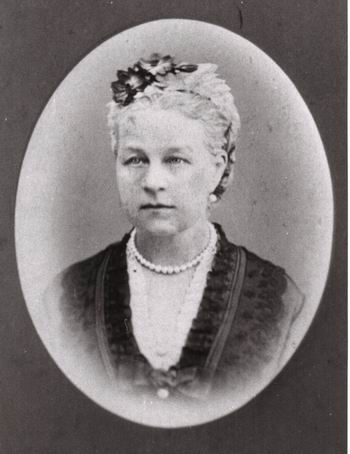Contents
Understand the meaning of a demand deposit in banking, the overview of the demand deposits and the criteria of the Federal Reserve regarding demand deposits. Demand deposit accounts pay little or no interest—the trade-off for the funds being so readily available. Time DepositsTime deposit, also known as term deposit, refers to the deposit account with fixed maturity and interest rate. Demand deposits have no restrictions on withdrawals, which means they are better-suite for people who need easy access to their funds. When someone opens a CD, they choose a term, such as six months, a year, or two years.

Nevertheless, because of the immediate availability of funds deposited in savings accounts and money market accounts, these are now often also considered Demand Deposits. Offered by banks and credit unions, demand deposit accounts allow you to deposit to and withdraw funds immediately, whenever you want—”on-demand,” in effect. The financial institution can’t require advance notice or charge a fee for letting you access the funds.
You must cCreate an account to continue watching
With a demand deposit, you can withdraw some or all of the money in your account whenever you’d like without paying a penalty or notifying the lender in advance. A money market account is similar to a savings account, but customers may write checks to withdraw money. Customers may deposit money into this account and withdraw a certain number of times each month. Typically, these accounts earn interest similar to or higher than a savings account. In a demand deposit, the customer can withdraw the money from the account at any time without paying a fee. In a time deposit, the customer must wait a certain amount of time before they can remove the funds.
- However, Checking Accounts do not pay interest to the depositors.
- Checking accounts typically come with debit cards that people can use to withdraw cash at ATMs or make purchases online or in person.
- You also must provide your account number so your employer can deposit the funds to the correct account at the bank.
- However, your funds are insured by the Federal Deposit Insurance Corporation for up to $250,000, which can provide some peace of mind.
The depositor will typically use demand deposit funds to pay for everyday expenses. For funds in the account, the bank or financial institution may pay either a low or zero interest rate on the deposit. Savings/Term Deposit accounts are for a longer duration than a checking account. They offer lesser liquidity and more interest rates than a checking account.
On March 26, 2020 the Federal Reserve reduced the reserve requirement to 0%, where it remains as of February 2021. The consumer can easily access their money from Demand Deposits. Some ways are Bank Teller, Net Banking, ATMs, by writing checks. Reproduction of news articles, photos, videos or any other content in whole or in part in any form or medium without express writtern permission of moneycontrol.com is prohibited. As by signing the return receipt they will know that you have legally notified them of this debt.
What are the types of demand deposit accounts?
DDA accounts can pay interest on the deposited funds but aren’t required to. Checking accounts and savings accounts are common types of DDAs. A money market account is for demand deposits that follow market interest rates. Market interest rates are impacted by the central bank’s responses to economic activity. The money market account will, therefore, pay interest either more or less than a savings account, depending on how the market interest rate fluctuates. Traditionally, money market accounts offer a competitive rate to savings accounts.
In deposit terminology, the term Demand Deposit refers to a type of account held at banks and financial institutions that may be withdrawn at any time by the customer. The majority of such Demand Deposit accounts are checking and savings accounts. At the end of the period, the depositor has the choice of withdrawing deposited funds plus earned interest, or rolling over the funds into a new term deposit.
Example of Demand Deposits
Households owned 35 percent of total private demand balances, while non-financial businesses owned 50 percent in the United States of America. Also, consider whether the bank offers any extra incentives, such as interest on checking or rewards for debit card purchases. Those kinds of features could act as a tiebreaker if you’re stuck trying to choose between two different checking accounts.
- They offer lesser liquidity and more interest rates than a checking account.
- The most common example of a term deposit is a Certificate of Deposit .
- A security deposit demand letter is a request made by a tenant reminding a landlord to repay the deposit paid at the beginning of a lease term.
- As stated, term deposits are deposits that are usually made for a few months to several years and reward you with guaranteed returns.
Additional funds may be withdrawn from an ATM, debit cards, the bank’s teller, or through written checks. Many also don’t pay interest, while many savings deposits and term deposits do. If you keep too much money in a demand deposit account instead of a higher-interest account, you’ll pay the opportunity cost of lost interest. A savings deposit is an account, such as a savings account, that is not designed for frequent transactions. Typically, savings deposits pay interest while most demand deposit accounts do not.
Checking if the site connection is secure
Mitch has more than a decade of experience as personal finance editor, writer and content strategist. Before joining Forbes Advisor, Mitch worked for several sites, including Bankrate, Investopedia, Interest, PrimeRates and FlexJobs. I’m a freelance financial journalist and a regular contributor to U.S. I’ve written for Life + Money by Citi, Bankrate and The Balance, among others. You can find me on LinkedIn or follow me on Twitter @seemomwrite. Hence, if the main objective of an individual is to access the fund easily and not the interest earned on the amount, than Demand Deposit is the best option.

The State-by-State demand letters are used when the landlord does not return the deposit after the tenancy has ended. The landlord must adhere to theirState Required Return Periodwhen the funds must be returned to the tenant. Ebony Howard is a https://1investing.in/ certified public accountant and a QuickBooks ProAdvisor tax expert. She will receive her initial $500 and the interest she accrued during the three years. Customers may visit a bank branch and deposit cash or check directly into their account.
What is an example of a demand deposit account?
Is a risk management strategy that involves splitting up your investment portfolio into different types of assets that behave differently, in case one asset or group declines. Checking accounts typically do not pay interest on the balance in the account. There is no limit on the number of withdrawals and transfers for a consumer. In general, if you do not hear from the landlord within thirty days chances are you will have to chase your security deposit via the court system. Failed to Transfer to New Owner – If the property is sold and the security deposit does not transfer to the new owner.
Requirements for Demand Deposits
In this time deposit account, customers deposit money to save for their retirement. They earn interest over time, and they can withdraw without fees at a certain date. A demand deposit account is a bank account in which you can withdraw your money at any moment, for any reason, without having to give the bank prior notice. A call deposit dwolla india account is a bank account for investment funds that offers the advantages of both a savings and a checking account. As larger balances are held for extended periods in a savings account, it pays a slightly higher interest rate than a checking account. Common examples of demand deposits would be amounts in a checking or savings account.
 Avatud: E-R: 10:00 - 18:00
L: 10:00-15:00 P: Suletud
Avatud: E-R: 10:00 - 18:00
L: 10:00-15:00 P: Suletud 
